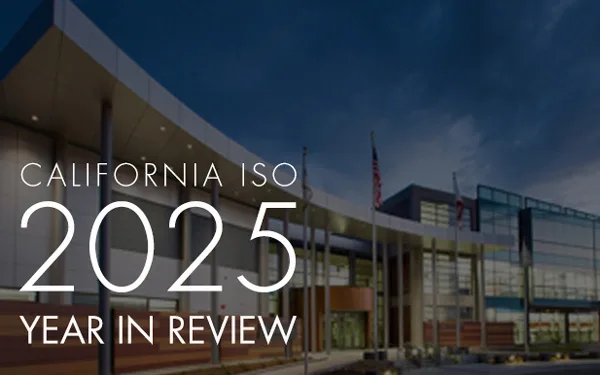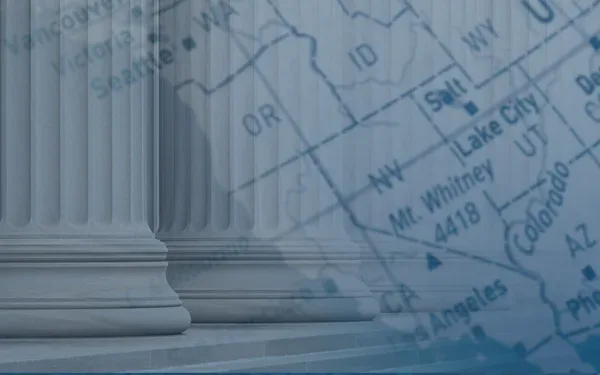Board Chair Jan Schori talks about her career; sees path to clean grid
When Jan Schori brings down the gavel at her first meeting as Chair of the California ISO Board of Governors this week, she will be bringing a rich legacy of environmental law, energy industry expertise, and state and national renown to the dais.
During her 45-year career, Schori has emerged as a major driver in the transition to clean, efficient, and reliable energy resources in California and the US.
Perhaps best known for her tenure at the Sacramento Municipal Utility District (SMUD), when she arrived there applying for her first job as a fresh-out-of-law school attorney in 1979, Schori didn’t know much about the utility with the odd-sounding acronym. She wound up staying there the next 29 years, capping off the last 14 as general manager and chief executive officer, the longest serving CEO in SMUD’s history.
After retiring from SMUD in 2008, she went on to the North American Electric Reliability Corp. (NERC) board, where she served as an independent trustee for 12 years.
As she starts her one-year chairmanship of the ISO Board of Governors, we talked with her about her vision for the power grid of the future, the challenges it faces, and some strategies to unlock the true potential of clean energy. We also got to learn about her personal background and a few fun facts along the way.
What’s your hometown, and where did you go to college and law school?
I was born in Sacramento and have lived all of my adult life here. But in early elementary school, my family moved to Riverside in Southern California where I spent much of my childhood. I received my bachelor’s degree in political science from UC Berkeley in 1975. I became interested in debate, which put me on the path to law school. I graduated with my law degree from UC Davis in 1978.
What drew you to the energy industry as an attorney?
Environmental law was a relatively new field when I graduated, and having grown up in Riverside with the worst air quality in the entire nation, I thought it was an opportunity to work on issues that would make a real improvement in the quality of people’s lives and the earth’s sustainability. SMUD wanted someone interested in environmental law and hired me.
What accomplishments are you most proud of at SMUD?
SMUD today continues to have a strong reputation for its commitment to the environment, renewable energy, and energy efficiency and I like to think that we helped to build that foundation during my tenure as CEO there, while not losing sight of our responsibilities to assure reliable and affordable electric service for our customer-owners. We were the first utility in California to offer customers a direct access program (commercial and residential) and the first to adopt a renewable energy portfolio standard. We approved the most stringent energy efficiency goal in California in 2007. We planted 430,000 shade trees in our nationally recognized energy efficiency urban forestry program. We successfully managed the impact of the 2000-2001 California energy crisis through retention of generation and long-term contracts, acquisition of hedge investments and insurance to minimize risk of adverse price movements, and establishment of clear trading guidelines and risk management criteria. We formed our own control area — now a balancing authority — and expanded it to include the Western Area Power Administration and neighboring municipal utilities — now a joint powers authority, Balancing Authority of Northern California. We were rated No. 1 in the nation for commercial customer satisfaction last two years of my tenure by JD Power & Associates, and first in California for residential customer satisfaction for six of the last seven years I was there.

What do you view as the most important achievements while you served on the NERC board?
When I started out on the NERC board, it was still in start-up mode after its designation by the Federal Energy Regulatory Commission (FERC) as the national ERO (Electricity Reliability Organization). NERC was immediately charged with the responsibility of establishing and enforcing the bulk electrical system reliability standards across the US and Canada. As I look back on the rapid changes that occurred during my 12 years on the board, I think there were two very important things accomplished. First, the transformation of NERC and regional compliance auditing and penalty enforcement from “all violations are equal” to an approach which focused our efforts — and the industry’s — on prioritizing the highest risk and highest rewards to reliability.
Second, the formal development, staffing, and funding for the E-ISAC, the national electricity sector’s cybersecurity interface point with all the governmental agencies addressing cyber threats and risks.
What do you see as the main challenges in the energy arena for the next decade? What are the key solutions?
Our top priority is grid reliability. People trust us to keep electricity flowing to their homes and businesses during all sorts of conditions, and that will always be our primary mission. But as the power grid operators, we also need to keep our eye on the horizon, which will be nothing short of transformational for the power industry. California’s mandate is to get to 100% clean energy by 2045, while growing our 50-gigawatt electric system to 120 gigawatts of carbon-free energy.
The ISO’s main role in that plan is to facilitate renewable project integration, and to get ahead of the curve to assure the transmission grid is available when it’s needed. The ISO’s interconnection queue has been overwhelmed the past few years; the most recent request window netted 541 interconnection proposals, up from 187 requests in the previous window, which had already tripled from the prior window. The process in place of studying and approving projects has been paralyzed by the overheated queue.
We are already exploring reasonable ways to deal with the sheer numbers in our Interconnection Process Enhancements initiative. We are working to prioritize the projects with the best chance of succeeding, and we have to incentivize getting projects located where they are most needed. It tells us that there are lots of possibilities to meet our future energy needs, but we can’t be sanguine that it will be easy.
Another big effort in front of us is the growth of our Extended Day-Ahead Market (EDAM), which I believe will prove instrumental to getting to the clean modern grid we all want. This will build on the demonstrated value of our real-time Western Energy Imbalance Market (WEIM).We already have two participants pledging to join EDAM, and the more that enter the market, the more economic benefits can be shared across the West.
What are your hobbies or personal interests?
Traveling almost anywhere but especially if Viking history or an archaeological site is involved. I take piano lessons (no musicians need fear the competition!) My husband and I also take advantage of Sacramento’s proximity to the Pacific flyway for birdwatching and we are in perpetual search for puffins in the wild. They always seem to have “just left” when we get there.
What does it mean to you to be serving as ISO Board Chair at this pivotal point in the energy industry?
The ISO is where the rubber is meeting the road, so to speak. While others talk about the transition to renewable energy, we are doing it every day and making it work. We have more than 7,000 megawatts (MW) of battery storage in operation now, the most in the world. In collaboration with state agencies, market participants and stakeholders, we added 5,660 MW of clean power in 2023. It’s so important to prove that the integration of clean energy resources can and does work and the lights stay on. It’s an exciting time to be involved in these rapidly evolving technologies and policies, and I appreciate the opportunity to work with such smart, dedicated, and talented people on the boards of the ISO and WEIM Governing Body, the ISO staff, and all our stakeholders.


